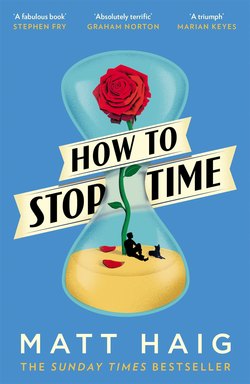Читать книгу How to Stop Time - Matt Haig - Страница 14
На сайте Литреса книга снята с продажи.
London and St Albans, 1860–1891
ОглавлениеAfter that first meeting with Dr Hutchinson I slipped into a state beyond my usual grief and restlessness and anxiety and despair – one of not feeling anything at all. And when I felt nothing I almost became nostalgic for the grief; at least when you felt pain you knew you were still alive. I had tried to fight this, forcing myself into life and noise. I had gone, on my own, to a few of the new music halls, always sitting near the front, right in the heart of the noise and laughter, and I laughed or sang along, trying to feel some of the joy that filled the room. But I was immune.
So one baking hot August day in 1880 I walked from Whitechapel to St Albans. London was too much for me. Too many memories. Too many ghosts. It was time to be someone else again. I suppose the way I understand my life is as a kind of Russian doll, with different versions inside other versions, each one enclosing the other, whereby the life before isn’t seen from the outside but is still there.
For years I thought the key was to keep building new shells on top of the old ones. To keep moving, to keep changing, to keep transforming into something else in the eyes of society.
St Albans wasn’t far from London but it was far enough. It was as new a place to me as any place in England could be, and I found work as a farrier. People now think of the early 1880s being an industrial time of smoke and factories but, as with every age, it was a carousel of many periods at once. The past stays and echoes even as modernity roars ahead. It was still the age of the horse and cart, and blacksmiths were thriving as much as they had ever been.
But in St Albans, things became worse. I would sometimes lose myself completely, and just stare into the orange heat of the forge, hardly aware of myself – or anything at all. On occasion my manager, Jeremiah Cartwright, would elbow me or slap me on my back and tell me ‘to climb down from the clouds’.
Once, when I was on my own, I took a desperate action in the pursuit of feeling. I pulled up my sleeve, took a searing piece of iron, curved into a horse-shoe from the flames, and pushed it against the top of my left forearm. I held it there, as my skin hissed and cooked beneath it, and I clenched my jaw and eyes tight, and contained the scream.
I still have that scar, like a half-smile, and I get a strange comfort when I look at it. Though it is another thing I have to be careful about. Another thing I have to conceal. A distinguishing mark, interfering with my anonymity.
It worked, I suppose. I felt the pain. It had come in and screamed through me, with mind-pulsing intensity. I had to exist, I realised, because for pain to be felt there must be a living presence – a me – to feel it. And there was a reassurance in that knowledge, that proof of my own reality.
But I still sought proof that I wasn’t mad.
Then, one day, a thought occurred to me. The thought was this: maybe I did have the proof. I, myself, was the evidence, and time was the proof.
And so it was that I decided to take that evidence, one final time, to Dr Hutchinson.
